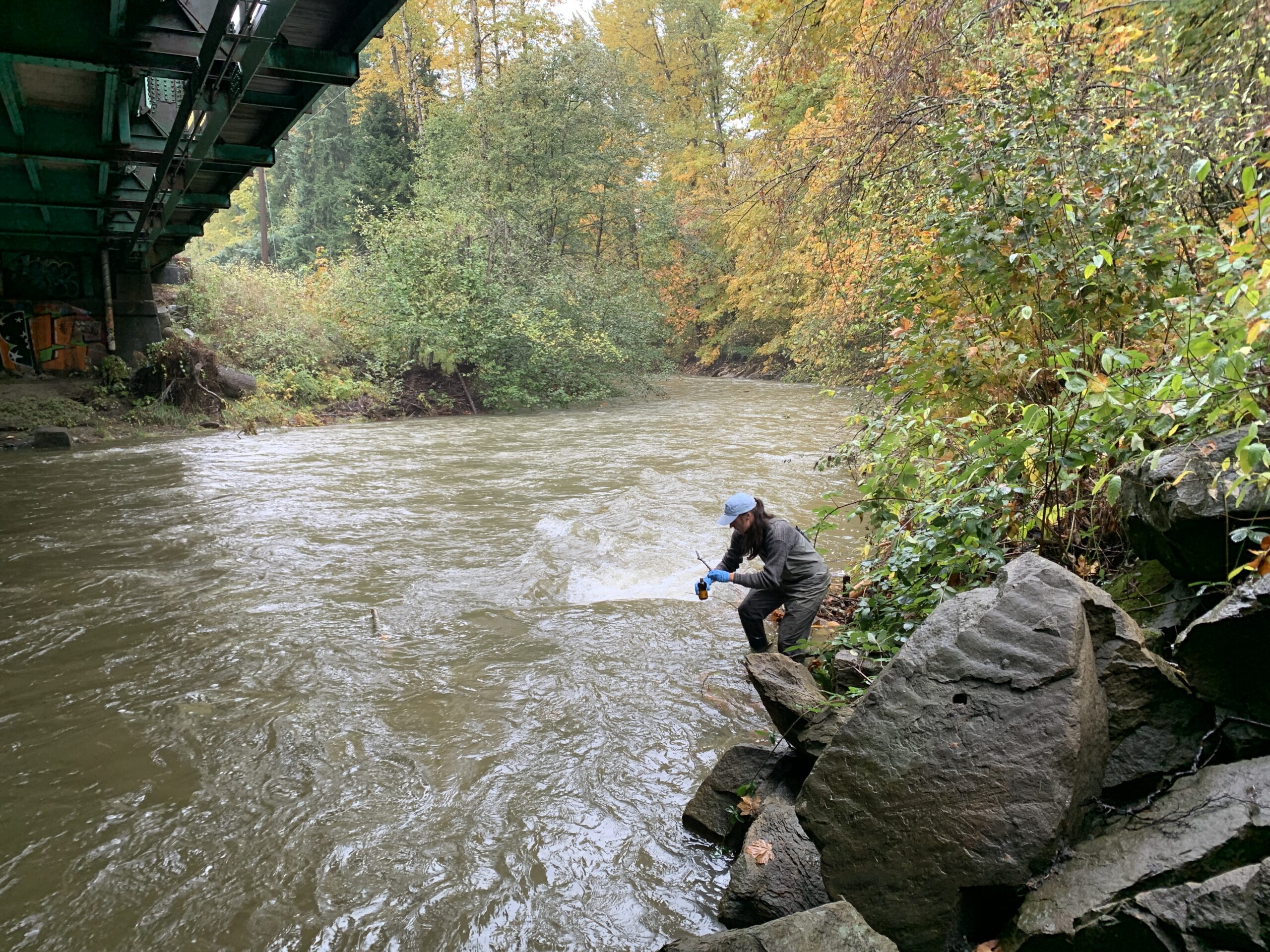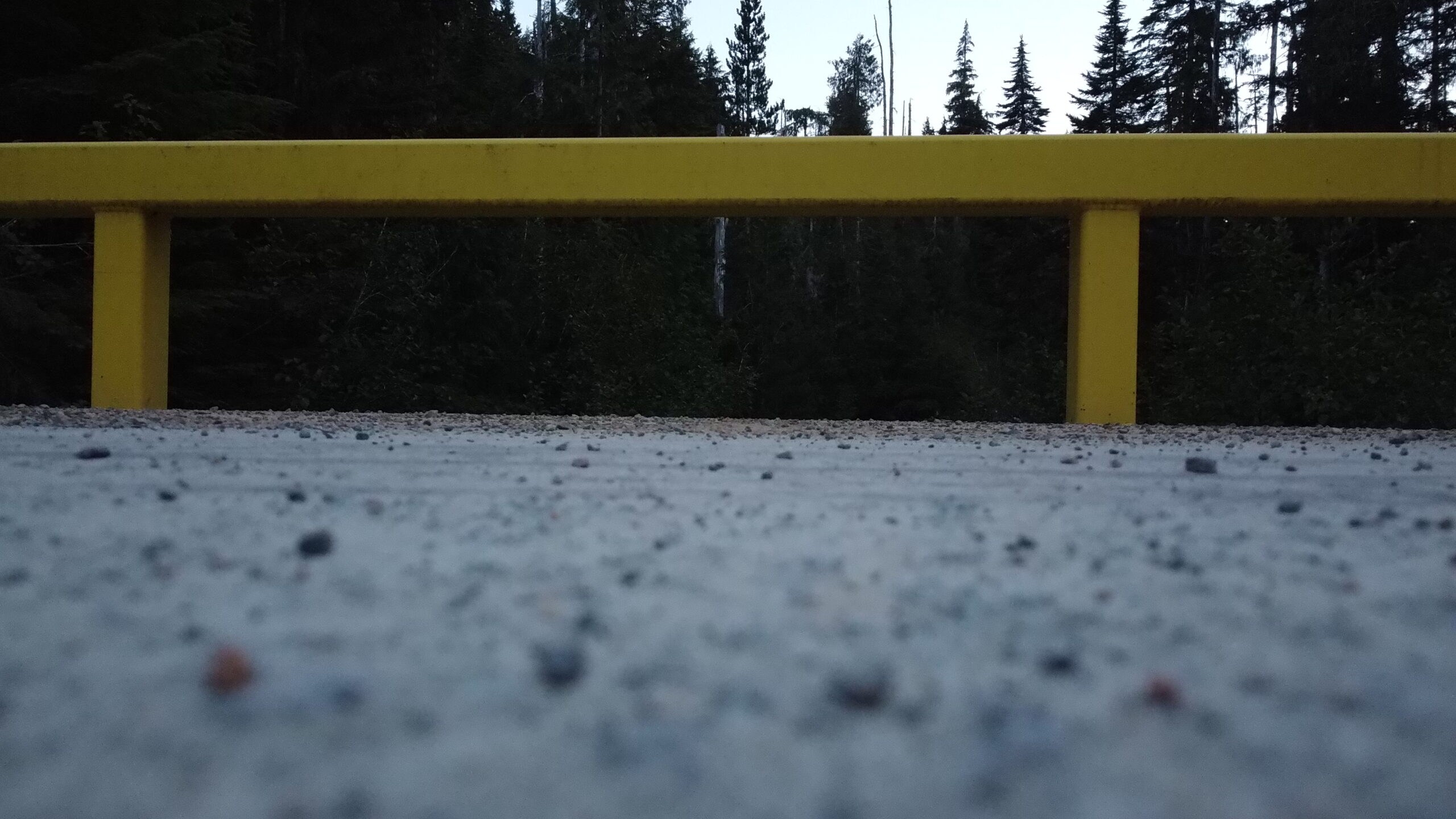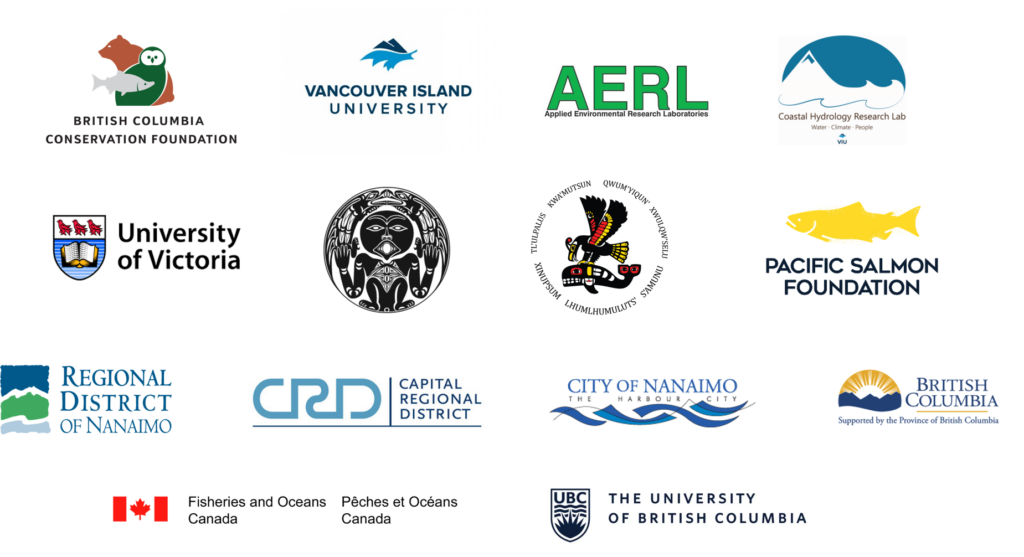
Mitigating Inputs of Tire Wear Toxins to Protect Salmonid Habitat on Vancouver Island
British Columbia Conservation Foundation, in collaboration with Vancouver Island University’s Applied Environmental Research Laboratory (VIU AERL), the University of Victoria’s Community Water Innovation Laboratory, local First Nations, stewardship groups, and government representatives, are working to identify which waterways along the east coast of Vancouver Island are most impacted by tire wear toxins (TWTs), specifically 6-PPDQ.
The TWT of concern, 6-PPDQ, was only recently (2020) discovered as the cause of ‘urban runoff mortality syndrome’ to coho salmon. These toxins enter salmon bearing streams and/or urban tributaries via untreated roadway runoff during rain events. The East Coast of Vancouver Island (ECVI) contains all of the Island’s major city centres and 89% of its population, making it an ideal study area to understand the extent of TWTs on the Island. Further, with many unanswered questions regarding TWTs impacts on freshwater environments and their inhabitants, it is critical to understand its extent now and where mitigation efforts should be implemented. As every road in proximity to a waterway is a potential input source during every rain event, understanding the scale and extent of this issue requires an intensive sampling campaign.
Sampling crews, primarily comprised of volunteers from local stewardship groups across Vancouver Island, are sampling before, during, and after major rain events to gain an understanding of which waterways are most impacted and which sources are contributing to the greatest amount of TWTs. All samples are being analyzed by the VIU AERL, using their innovative chemical analysis method, which allows for an extensive number of samples to be analyzed each rain event. The quick turnaround on samples allows the sampling team to obtain nearly real-time results, permitting for sampling efforts to be modified (i.e., add more sites, shift location) based on the results.
The overall goals of the project are:
Identify Major TWT Sources Along the ECVI
Sampling crews, primarily comprised of volunteers, are sampling waterways from Campbell River, south to Victoria. The results of the grab samples collected will inform the other three activities involved in the project.
Investigate TWT Variation Over Time & Space
Samples will be collected at more locations to identify different TWT inputs on systems that have 6-PPDQ present. VIU will deploy their mobile lab creek-side to continuously sample during rain events to gain a better understanding of 6-PPDQ's variation over time.
Evaluate Green Infrastructure & Nature-Based Solutions
Existing green infrastructure will be sampled during rain events (i.e., rain gardens, bioretention systems) to assess their ability to remove 6-PPDQ. Also, the University of Victoria's Community Water Innovation Lab, is building lab-scale wetlands to assess different plant's and material's ability to remove 6-PPDQ from stormwater runoff.
Annual Workshop For Knowledge Dissemination
The project team will host an annual two-day workshop, with the first day focused on sharing findings and educating the public and the second day designed to be a workshop where researchers can share details around sampling and analysis, as well as find new collaboration opportunities.
The project team’s longer-term goals include:

- Identify major TWT inputs and prioritize these sites for future mitigation efforts
- Determine the most efficient means of mitigating TWT and identifying restoration strategies
- Raise awareness of the issue within the community and all levels of governments to ensure conservation actions are implemented and TWTs are prevented from entering waterways where they directly threaten vulnerable salmon species
Project Partners Include

Funding for this project is provided by

Aquatic Research and Restoration Centre
#105 – 1885 Boxwood Road, Nanaimo, BC V9S 5X9
Tire Wear Toxin Project Manager Contact
Phone: 250-390-2525 ext. 106
Email: htomlin@bccf.com
Follow us
We gratefully acknowledge that the Aquatic Research and Restoration Centre is located on the traditional, ancestral, and unceded territory of the Snuneymuxw First Nation. We also recognize that project activities are occurring across the traditional, ancestral, and unceded territories of Coast Salish, Kwakwaka’wakw, and Nuu-Chah-Nulth Peoples.
Copyright ©2023 British Columbia Conservation Foundation. All rights reserved. This material is owned by British Columbia Conservation Foundation and protected by copyright laws. It may not be reproduced or redistributed without the express, prior, and written permission of the British Columbia Conservation Foundation.
